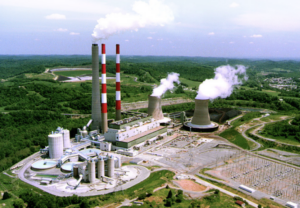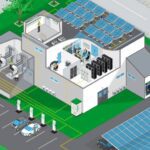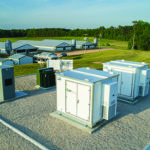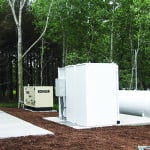A distribution center in Finland is installing what is being called the country’s largest industrial microgrid, a system that will use 100% renewable energy. The system is being built by Schneider Electric in Järvenpää. It will be used by Lidl, a grocery store chain based in Germany. “It’s a tremendous project,” said Matthieu Mournier, Schneider Electric’s head of microgrid business based in France.
Mournier spoke with POWER on November 13 at Schneider Electric’s Innovation Summit North America in Atlanta, Georgia. Mournier said the distribution center is the size of 10 football fields (Figure 1) and is “the largest industrial microgrid in Finland.” The project, which will use power generated by 1,600 rooftop solar panels, is expected to come online in 2019. The microgrid is designed to cut the center’s energy costs in half. The system also heats the facility—it recovers heat from the distribution center’s refrigeration equipment—and supplies hot water to about 500 nearby homes. The microgrid also serves the region’s electric grid via its battery storage system.
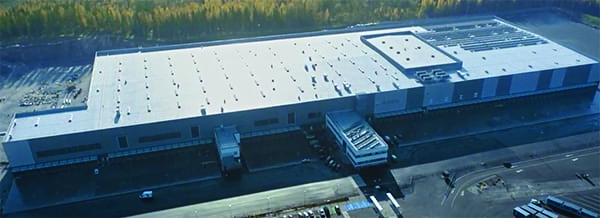 |
| 1. This distribution center in Finland is operated by Lidl, a grocery store chain based in Germany. Matthieu Mournier, Schneider Electric’s head of microgrid business, who is based in France, said the facility is the size of 10 football fields and is “the largest industrial microgrid in Finland.” Schneider Electric designed the microgrid, which is expected to cut the facility’s energy costs in half. Courtesy: Schneider Electric |
“The Lidl distribution center is much like any of our other microgrids,” said Andy Haun, chief technology officer for microgrid business for Schneider Electric, in an interview with POWER at the Innovation Summit. “It’s a mixture of DERs [distributed energy resources] on-site that can connect to the grid or not connect to the grid.” In the case of an outage on the grid, the facility would island, or disconnect from the grid. Haun said his group designs its systems to reduce energy costs. “Rather than add heavyweight costs, [we] stick the resilience at the edge. We’re working with hospitals, providing backup [generation], powering nuclear facility control rooms, providing safe, reliable, resilient power.”
The distribution center utilizes Schneider Electric’s EcoStruxure Microgrid and EcoStruxure Building Operation products that run on 100% renewable energy. It will use demand response, with its microgrid comprised of a solar power plant, battery energy storage, bi-directional district heating, and an EcoStruxture control system. The microgrid’s battery energy storage system will be used to equalize power demand spikes and ensure continuous power distribution.
“During periods of very cold weather, Finland’s grid can experience peak loads,” said Simo Siitonen, the energy management manager at Lidl Finland. “The battery energy storage system implemented at Lidl will enable us to react quickly to these consumption spikes, help reduce the load on the grid, and ensure there is sufficient electricity for everyone in Finland.” Siitonen said Lidl’s goal is to build the most environmentally friendly grocery distribution center in the Nordic countries.
Strict energy technical targets have been set for the building’s entire lifecycle. The building is carbon-neutral and the energy cost savings goal is more than 50%. The system includes the EcoStruxure Microgrid Advisor, a software-as-a-service platform that is designed to simplify the integration of DERs and allows a facility manager to collect, forecast, and automatically optimize the operation of onsite resources using real-time data and predictive machine learning algorithms. The system will allow Lidl’s energy management teams to monitor and manage all aspects of the microgrid, including the control system, energy use optimization, power and heat demand response, energy storage, and a solar electricity system along with the heating and cooling system. The system, as part of its real-time energy optimization, will consider utilization rate, price, consumption of electricity, and weather in Finland.
“Lidl Finland’s decision to build a carbon-neutral and at times net-positive building shows determination and foresight to find the best possible integrated solution that not only allows them to operate the facility more efficiently than their existing ones, but also sets an example for how to build and operate in a sustainable way for the good of the environment,” said Tuomas Qvick, Schneider Electric’s vice president of EcoBuilding & Field Services Finland. “This is significant both nationally and internationally,” Qvick said. Added Haun: “A UPS [uninterruptible power supply] is the bridge to local power. Maybe you have other things you want to be able to run in case of an outage. Automation is in place to support essential loads, and this allows [an operator] to dial-on resilience according to [their] needs.”
—Darrell Proctor is a POWER associate editor.





